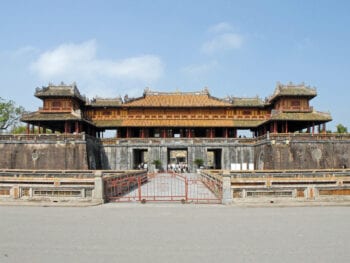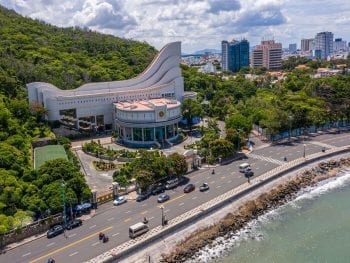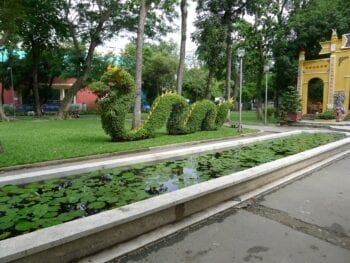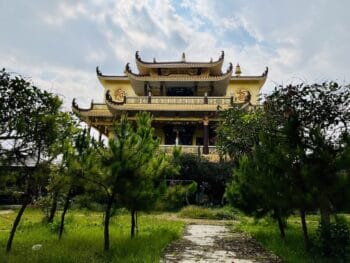An impressive country on the eastern end of the Indochina Peninsula, Vietnam has a lot of different amazing landmarks. From manmade bridges and buildings to natural caves and lakes, there are a countless supply of landmarks to add to your Southeast Asian itinerary.
Types of Landmarks in Vietnam
The word “landmark” can be relative to whom you’re asking. While things like mountain peaks, waterfalls and rivers often marked the land and route for early travelers, today tall skyscrapers and historical sites do the same. Here’s a look at the different types of manmade and natural landmarks found in Vietnam.
Featured Landmarks
Guide to Natural + Manmade Landmarks in Vietnam

From Hanoi to Can Tho and beyond, Vietnam is a country that is jam-packed with incredible things to see and do. The land and its contents are incredibly diverse, so it has landmark types in multiple categories appealing to tourists from all over the world.
Bridges

Because rivers and bodies of water are all over Vietnam, it only makes sense that there would be so many bridges. Vietnamese bridges are often treated like artwork, turning them into unique tourist attractions.
Da Nang is sometimes referred to as the “City of Bridges” because of how diverse they are and the intriguing features they hold. Hoi An’s Japanese Covered Bridge is over 400 years old and is another focus point for travelers who enjoy seeing a piece of living history in an ancient city.
Buildings

In the big cities, some impressive buildings tower over the bustling metros below and are exciting places to visit and get a unique perspective. Hanoi’s Lotte Center and Keangnam Landmark Tower 72 are a couple of the capital’s most impressive buildings, which have observation decks with outstanding panoramic views of the town.
In Ho Chi Minh City, the Landmark 81 building also has a fantastic viewing deck in addition to a coffee shop and VR game called “Top of Vietnam.” At the same time, the Saigon Skydeck in the Bitexco Financial Tower offers sweeping views of the country’s most populated city.
Caves

While Vietnam might not be the first place someone associates with caves, it happens to be home to the world’s largest cave, Hang Son Doong, which was only discovered in the early 1990s. There are numerous caves to explore throughout the country, with some of the most famous ones being in Ha Long Bay and the Quang Binh Province. Most of the major caverns and grottoes can be visited through tour companies.
Historical Sites

Given that Vietnam has such a deep and colorful past, there are plenty of sites to see for every type of history buff. Even travelers who are just casually interested in time periods like the Vietnam War and the prehistoric era of the country will find something that strikes their interest.
Visitors with a passion for military history will appreciate the War Remnants Museum and Cu Chi Tunnels. In contrast, others who like to experience ancient history will enjoy the Japanese Covered Bridge, My Son Sanctuary, and Hoi An’s Old Town.
Lakes

Vietnam has many natural and artificial lakes, both of which provide lots of opportunities for outdoor recreation or just a peaceful day by the water. Hanoi’s West Lake and Hoan Kiem Lake are two of the most popular ones for tourists and locals alike to spend time at, as both are ideal for visiting to take a break from the hectic city chaos. Others like Ba Be Lake are set outside of the city and provide a more natural environment in its surroundings.
Mountains

Mountains in Vietnam are visually stunning and fantastic spots for outdoor enthusiasts, hikers and climbers to get their workout fix. The country’s tallest and most famous mountain is Fansipan, which provides a challenging two-day hike or a 20-minute cable car ride to the top.
The Marble Mountains near Da Nang are ideal for visitors who enjoy getting some exercise without exerting too much, as the path to the top is via 160 marble steps. Mountain towns like Sapa are also great escapes from the vibrant cities, as the climate and rural scenery are something unique to the rest of Vietnam.
Rivers

Vietnam is a country that has a little bit of everything in its landscape, including a variety of rivers such as the Mekong River, the largest in Southeast Asia. These bodies of water are vital to many cities, providing pathways for boats and offering tourists lots of stunning scenery. Many rivers are highlighted in populated areas, like the famed Perfume River that runs through Hue or the enchanting Hoai River that flows through Hoi An.
Streets
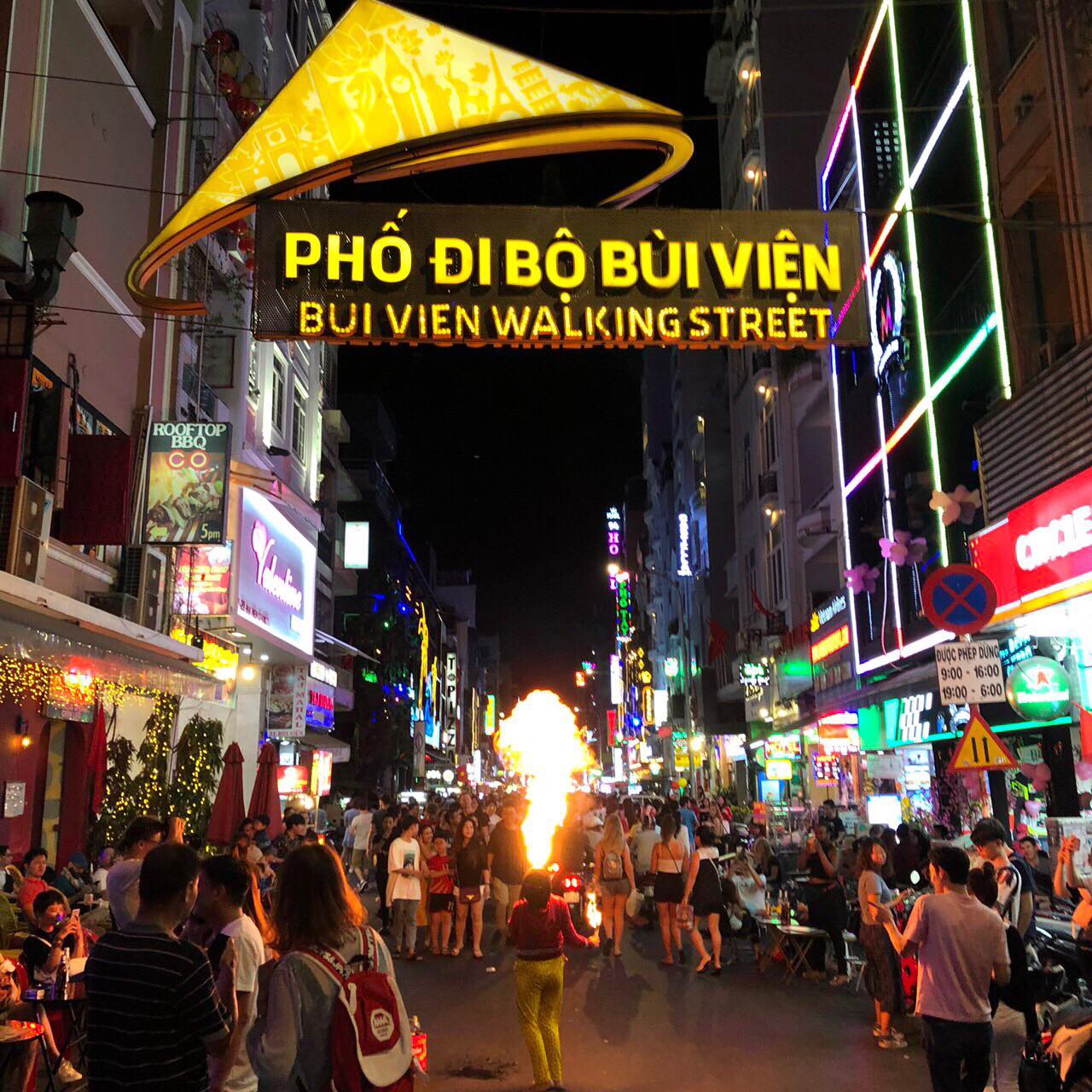
Tourists to Vietnam like to know where the action is at. This is why streets like Bui Vien Street in Saigon are one of the areas that draw in a lot of party-goers and backpackers for some wild fun on the town.
Others like the Hanoi Old Quarter Walking Street in the capital is closed to traffic for most of the weekends and an attractive place for tourists to stroll by Hoan Kiem Lake and experience street artists.
In Ho Chi Minh City, Nguyen Hue Street is a pedestrian-only walkway that visitors can take in a pleasant stroll or listen to live music and performances when they happen.
Waterfalls

Planning a trip to Vietnam should also include some time away from the city, so landmarks like Vietnam’s breathtaking waterfalls aren’t missed from the itinerary. Tourists are sometimes in awe to discover the Silver Waterfalls near Sapa or the Dambri Waterfalls close to Dalat.
One of the most famous waterfall locations is the Ban Gioc – Detian Falls, a tiered waterfall near Cao Bang that has an even more impressive flow during the second half of the year.
As you can see there are a wide array of landmarks in Vietnam depending on your definition. Both natural and manmade landmarks await your exploration.







